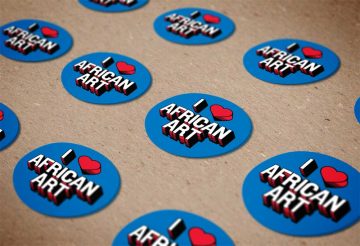Related pages: Identifying Artists and Workshops | The Khartoum School | The University of Nigeria, Nsukka | Dogon Style
Art is a reflection on life. Life isn’t something we can cut and fix. It’s always in a state of flux
—El Anatsui, 2012
What makes a great artist?
 Extraordinary skill and creative vision are encompassed in the works of art in this room, from an intricately carved figurative bowl to the soaring plastic serpent. To realize these forms, some of the artists trained for years as apprentices, others went to universities, and a few are self-taught. In all cases, exchanges with other artists inform and refine their practice. Their experiences are as diverse as the works they created.
Extraordinary skill and creative vision are encompassed in the works of art in this room, from an intricately carved figurative bowl to the soaring plastic serpent. To realize these forms, some of the artists trained for years as apprentices, others went to universities, and a few are self-taught. In all cases, exchanges with other artists inform and refine their practice. Their experiences are as diverse as the works they created.
This diversity of great artists is reflected in the museum’s holdings of works from university programs—like those at Nsukka, in Nigeria, and Khartoum, in Sudan—and from Yoruba artistic workshops. Yoruba communities in Nigeria and Benin have a rich history of celebrating their artists, making it possible to retrieve the names and identify the styles of artists who trained as apprentices. Universities in Africa have produced multiple generations of artists who have also built on the visions of their predecessors, transforming the landscape of the international art world.
Look at the delicacy of a detail incised in wood, the rhythmic patterning of lines drawn in ink or pastel, or the distinctive use of unexpected materials. Can you identify features that distinguish each artist’s or workshop’s style?
Chike Aniakor creating Changing Experiences, National Museum of African Art, Washington D.C., 1996
Photograph by Simon Ottenberg
